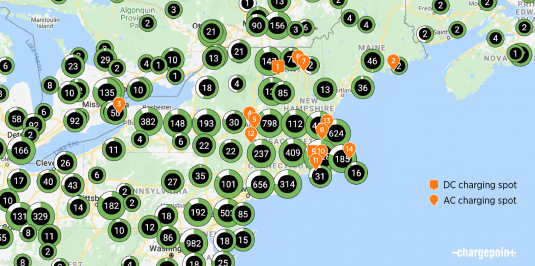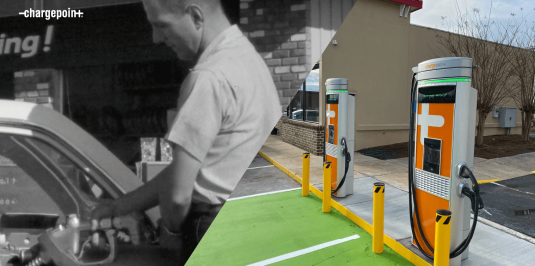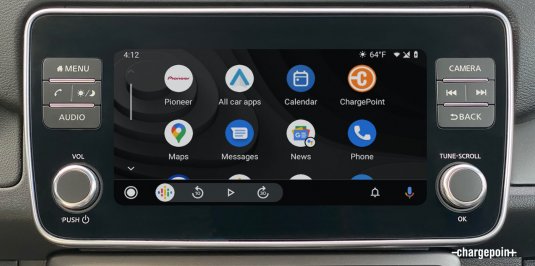The Chevy Volt is the best-selling plug-in hybrid electric vehicle (PHEV) of all time: more than 130,000 have been sold since its release in 2010. Early models offered about 40 miles of all-electric range, while the latest Volt has 53 miles. Both are more than enough for most drivers’ 30 miles a day of driving needs.
Being able to drive electric most of the time, but access the convenience of gas when needed, has helped many people make the switch to electric, including me. I’ve been the proud owner of two Chevy Volts: I loved driving my 2013 Volt for several years, then traded it for a 2016 Volt (Gen 2). Since then, I’ve also added a 2017 Chevy Bolt EV to my garage, and I can say without equivocation that these are some of the finest cars I’ve ever owned.
Why Choose a Plug-in Hybrid?
Plug-in hybrids have a gas engine and an electric motor, so they can plug in to charge the battery, but can also run on gas only when needed. If you want to drive electric most of the time to reduce your emissions and save on fuel costs, it’s very possible. For example, it’s December 2017 and the last time I bought gas for my Volt was on Valentine’s Day! (I just want to know: does gasoline spoil?) If you want to try going electric but don’t have access to charging at home or work and want to take long trips without charging, a hybrid may be a good choice.
How to Charge the Chevy Volt
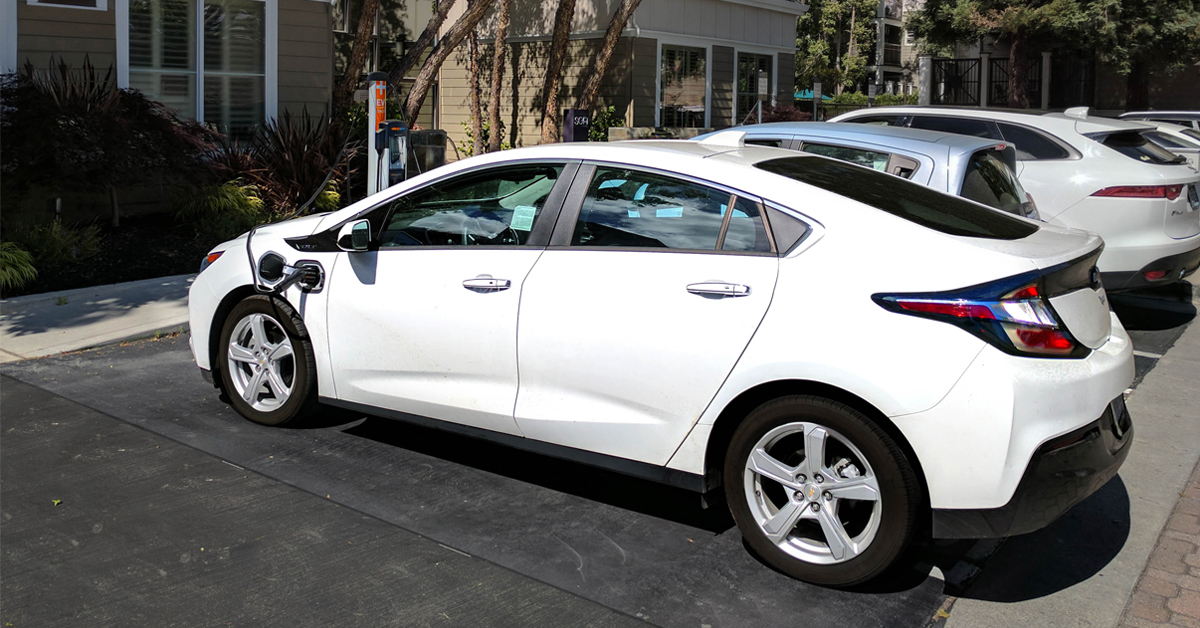
With a Volt, you can top off the battery anytime you’re parked, at home or around town, instead of making a separate trip to refuel. Topping off your Volt helps give you as much range as possible and makes each charging session shorter. It takes just a few seconds to plug in, and then you can go about your day (or night) while your Volt gets some charge.
Charging Your Chevy Volt at Home
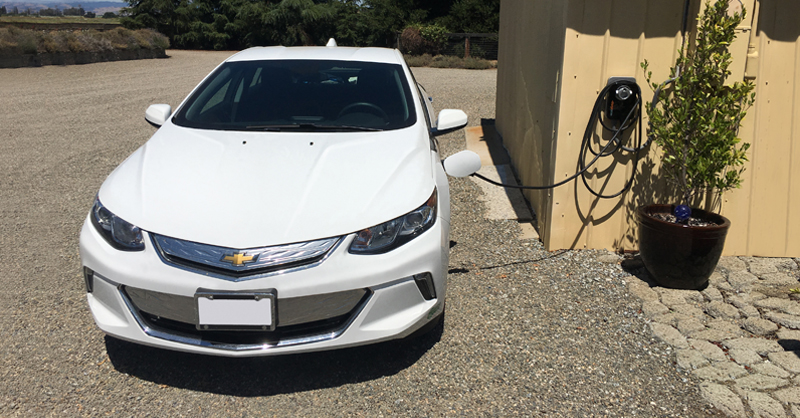
Charging a plug-in hybrid at home is not much different from charging your cell phone or laptop. Just plug the cord that comes with the car into a regular wall outlet to add about 4 miles of Range Per Hour. It will take about 12 hours to recharge your Chevy Volt this way. If you don’t have 12 hours available every day to recharge or want to be able to make multiple longer trips in a day, upgrading to a Level 2 home charger makes sense.
One difference to note is that many plug-in hybrids like the Volt have a slower onboard charger (what converts AC power from an outlet to DC power for the battery) than battery electric vehicles, meaning these hybrids can add only about 12 miles of Range Per Hour with even a 32-amp Level 2 charger (that’s compared with the 25 miles of Range Per Hour most battery electric vehicles can add). Still, getting a faster Level 2 charger will prepare you get an all-electric vehicle eventually, like I did.
If you don’t live in a single-family home, we’d love to help you get EV charging at your apartment or condo. A hybrid can be a great choice if you can’t charge at home because you’ll have a gas tank if you really need it. You can live the EV lifestyle with any car if you charge at work or Level 2 stations around town. Check the ChargePoint app to find places to charge near you.
Charging Your Chevy Volt at Work and Around Town

They can be hard to spot if you’re not an EV driver yet, but there are likely plenty of charging stations at nearby workplaces, restaurants, retail stores and other places you spend time (confession: I charge here at work). These locations usually have Level 2 stations with a universal connector that can add about 12 miles of Range Per Hour to your Volt.
The best part about charging around town is that you can go about your day while charging, instead of waiting around for your EV to refuel. Discover places to charge near you in the ChargePoint app and just tap your phone or use the ChargePoint card that comes in the glovebox of the Chevy Volt to start charging.
Fast Charging and PHEVs
Like most plug-in hybrids, the Volt doesn’t have fast charging as an option. Don’t worry, you won’t need it. Fast charging is generally for long trips and PHEVs have a gas engine available for those. Like I said, though, no gas since February.
How Much Will It Cost to Charge the Chevy Volt?
Get a sense of how much you will save by switching to the Volt using our calculator. For the 2,300,000 Chevy Volt charging sessions on ChargePoint so far, the average fee has been just $0.70 per session, and over 70% of sessions were free.
70% of Volt charging sessions have been free to the driver.
The cost of charging can vary widely between different EV charging stations and networks. ChargePoint station owners set their own fees, and you can always check the station details page in the app for the latest pricing information.
Most businesses offer charging for free or at cost because they want you to come in.
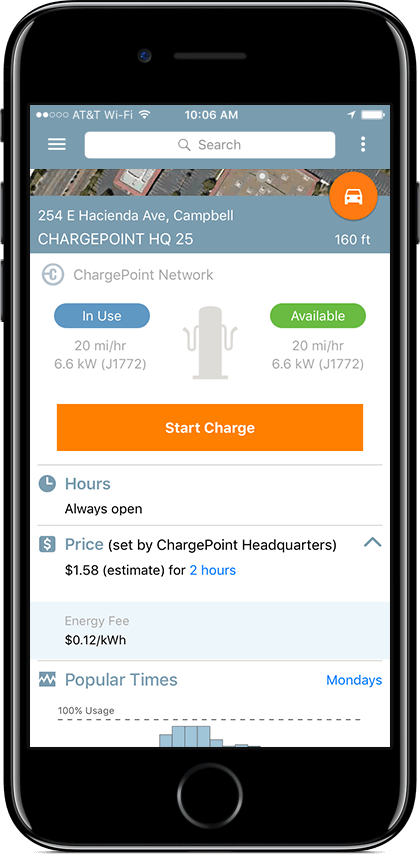
When charging at home, the cost of charging will vary depending on how much you drive and how much electricity costs in your area (and if you can get a special EV charging rate plan, like me).
Have I won you over to driving (mostly) electric yet? Don’t forget to sign up for ChargePoint to charge your Chevy Volt.
Any questions? Want to share your experience with the Volt? Come find us on Facebook or Twitter.
